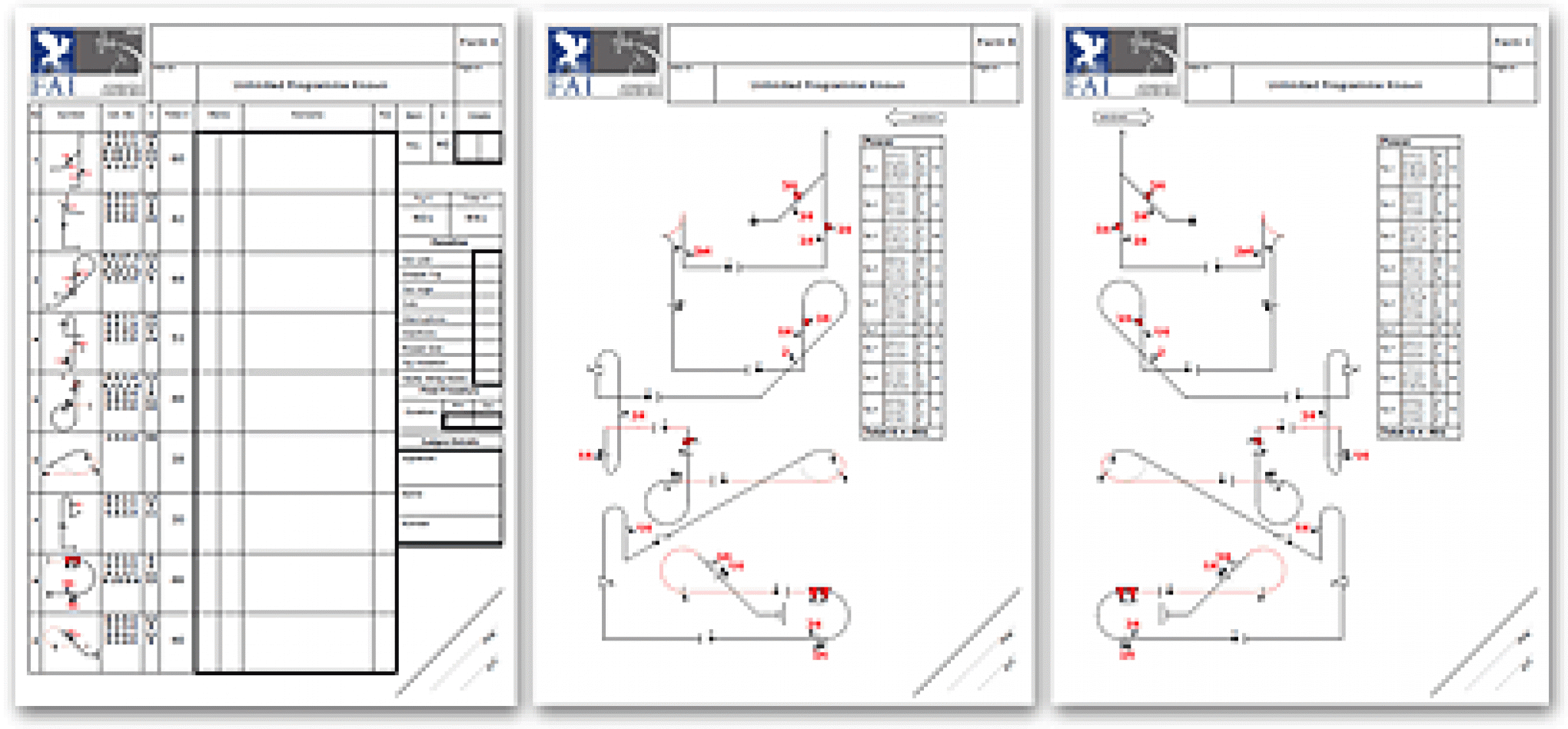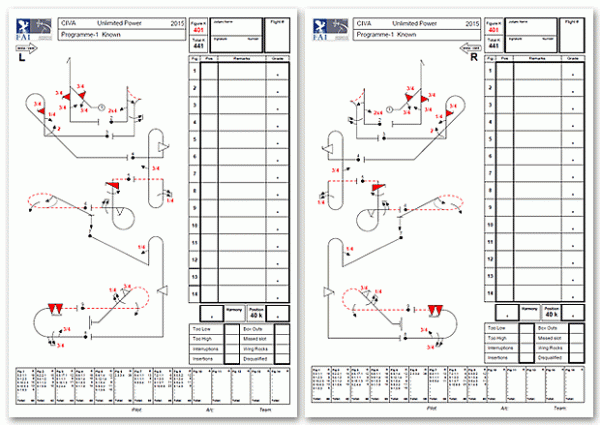Judging forms as they have always been
Somewhere around a half-century ago the classic three-form system of a writers sheet plus another pair to show the sequence diagram in wind-left and wind-right formats became established, and despite our much later transition to super-capable personal computers and printers, this concept has remained almost unchanged.
A while back some South African judges discovered that using the B/C diagram forms to note their marks and comments next to each figure was distinctly simpler and more direct, after each flight quickly transferring their data to the A form. So why don't we redesign our forms to extract the best advantage from this new and original thinking - dispense with the redundant A form and keep the rest on just two sheets?

Take a completely fresh look ...
Further careful investigation has now led us to a new two-form solution displaying the necessary wind-left and wind-right sequence diagrams, but with all the Aresti catalogue data, K-factors, marking slots, positioning letters and of course the contest details - all on a single pair of mirror-image forms. The diagram dimensions are unchanged, the writing boxes are a similar size, the comments can go either in the appropriate text box or better still next to the figure itself, paperwork is reduced, in fact, everything from the A/B/C layouts but on just two forms.
Try them for yourself
These new-style R/L forms have now been adopted as standard alternatives to the historic A/B/C sheets that have been the normal option for over a half-century now. They are approved for use at CIVA and other events, in fact are the usual solution chosen by the judging panel at all championships.
Both the OpenAero and Aresti sequence diagram software packages can create and output them for any existing or historic sequence.

